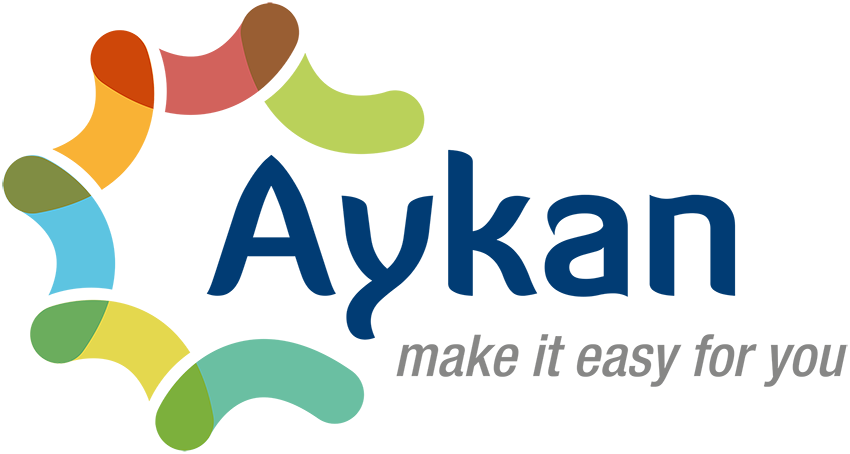World Like Home is a community-driven initiative dedicated to supporting international students as they navigate the challenges of studying abroad. Founded on the principles of friendship, support, and inclusivity, our platform connects students with trusted local hosts, known as Esians, who offer guidance, assistance, and companionship. Through a structured four-step process—Initiation, Request, Connection, and Follow-up—we ensure a seamless experience for students, from finding a suitable Esian to fostering long-term relationships that ease the transition to a new country.
At the heart of our mission is the belief that no student should feel alone. By building a network of caring individuals, we strive to create a welcoming environment where cultural exchange thrives, meaningful connections are formed, and students can focus on their academic and personal growth. World Like Home is more than a service; it’s a movement toward a more connected and compassionate world.
World Like Home Unique Features:
1. User-Centric Platform with Two Distinct User Roles
World Like Home was architected with a dual-user model to serve two core audiences: students seeking local services and individuals or institutions offering those services. This user separation allowed us to build highly targeted experiences for each group. Service providers were divided into three categories—individuals (e.g., other students or alumni), organizations (like community NGOs or student clubs), and universities themselves. Each type followed a unique registration and onboarding journey, enabling the platform to cater to their operational differences.
A verification system was integrated where providers submitted ID documents or organizational proof, which were reviewed by admins before assigning a “Verified” badge. This helped establish trust and created a more secure environment, which was essential given the platform’s international, student-focused nature.
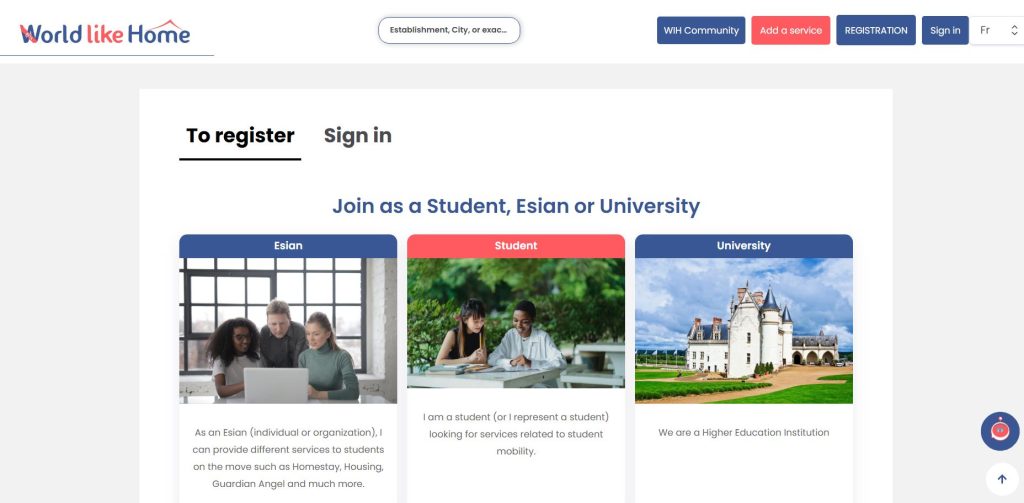
2. Custom Profile Pages for a Personalized Experience
To create a truly user-first experience, we built distinct profile pages tailored to each user type. For students, profiles captured personal information like nationality, university, and degree program, while also allowing the upload of key documents—passports, visas, and admission letters. These uploads were crucial not just for verification but also to ensure smoother service-matching. For service providers, profiles included service categories offered (e.g., airport pickup, accommodation support), languages spoken, past reviews, pricing, and an image gallery.
Providers could also upload credentials such as student IDs or business registrations. Each profile acted as both a personal space and a public-facing service showcase, promoting trust and professionalism.
3. Seamless Service Discovery on the Landing Page
Our goal was to reduce the learning curve and get users to relevant content quickly. The landing page retained familiar visual elements for brand consistency but was enhanced with an intuitive search flow. Students could easily select from predefined service categories like “Housing Support,” “City Tour,” or “Transportation Help.” After entering a university name or location, the system would search for nearby providers using geolocation and display immediate results.
A predictive input field offered suggestions while typing, improving accuracy and speed. This streamlined approach drastically improved the user journey, particularly for international students who were likely accessing the platform under time-sensitive or stressful circumstances.
4. Advanced Search and Filtering on the Browse Listing Page
We implemented a highly functional browse listings page that included advanced search capabilities to help users refine their results. One standout feature was the radius-based search—users could enter a university address and filter providers within 5, 10, or 20 kilometers. We also offered real-time filters for price, rating, language, service category, and provider type (e.g., verified only). Listings updated dynamically based on filter changes, enhancing responsiveness. Each card clearly displayed service titles, thumbnail images, provider rating, and pricing breakdowns.
A “Book Now” button encouraged fast action. If no services matched the query, a fallback system allowed users to submit a Pre-Booking Request, paying in advance while WLH staff sourced the right provider manually, ensuring no request was ever left unmet.
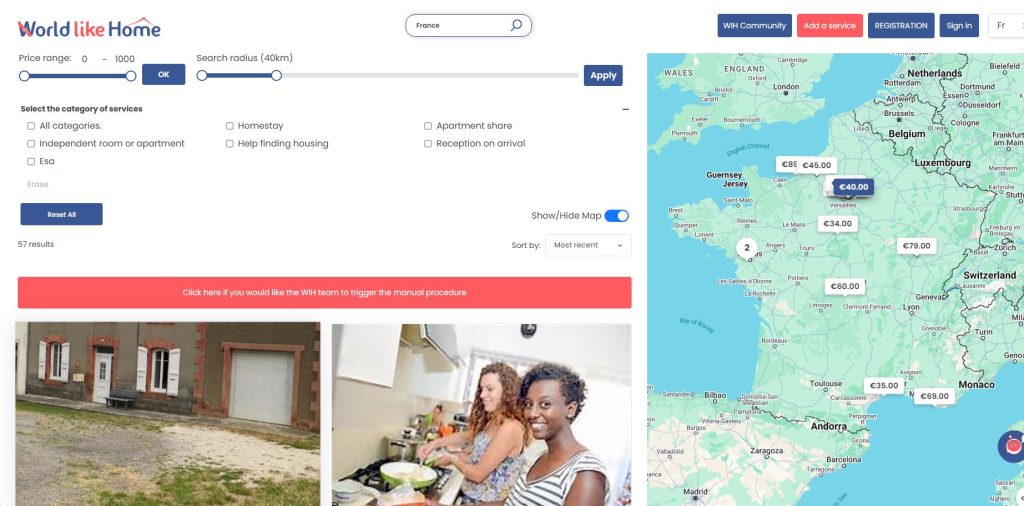
5. Detailed Listing Pages and Enforced User Authentication
Each individual listing page was thoughtfully designed to provide clarity, transparency, and confidence to students before making a booking. Listings displayed a breakdown of all included services, optional add-ons, the provider’s personal intro, availability schedule, and a map pinpointing their operational zone. Pricing was split into base cost, WLH platform fee, and any extras—clearly labeled to avoid surprises.
To protect both students and providers, authentication was enforced before any user could message, book, or review a listing. This ensured that only verified users could interact, drastically reducing spam and fake accounts, while also encouraging a higher-quality community.
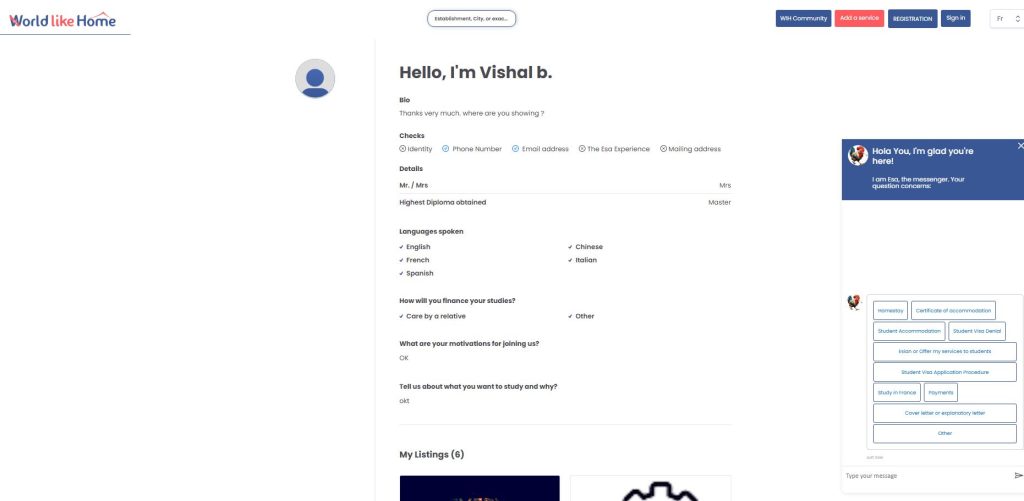
6. Streamlined Booking and Transaction Flow
The entire booking workflow was mapped out to minimize friction and ensure clarity at every step. After browsing listings, students could submit a service request form, which included their preferred dates, a message to the provider, and optional file uploads for context. The service provider would then receive a notification and either accept or reject the request. Upon acceptance, the platform triggered a secure payment flow, locking the booking and initiating confirmation messages to both parties. This three-stage flow—request, acceptance, payment—ensured both commitment and clarity.
All bookings were logged in user dashboards, with real-time status updates, reminders, and follow-ups managed automatically.
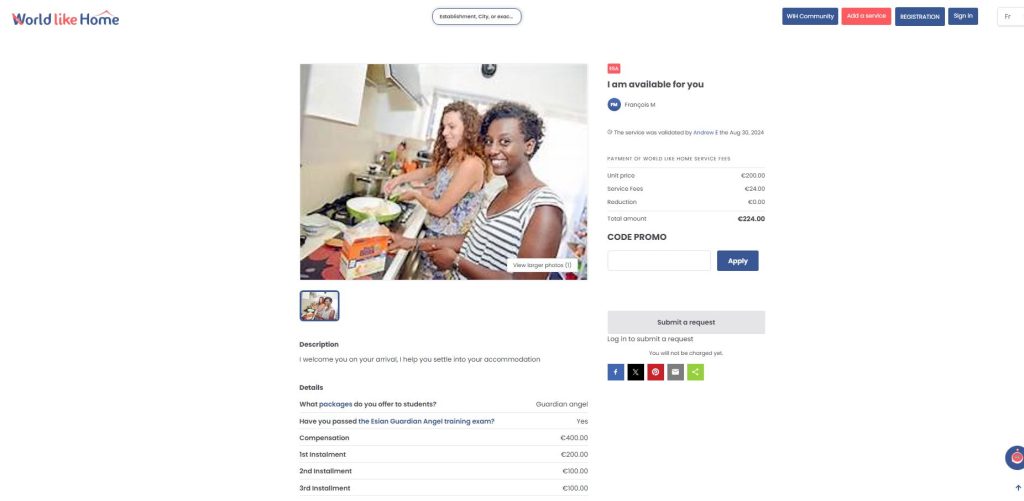
7. Secure Payment Integration with Stripe
Given the sensitive nature of financial transactions involving international students, we prioritized payment security and flexibility. By integrating Stripe, users could pay via credit/debit cards, Google Pay, or local bank transfers, depending on their country. All payments were routed through Stripe’s secure environment. To prevent fraud or unauthorized withdrawals, payouts to service providers were not automated—they were reviewed and processed manually by the WLH admin via the Stripe dashboard. This allowed us to enforce compliance and address any disputes or refund requests in real-time.
8. Powerful Integrations for Communication and Automation
To maintain smooth and automated interactions, we connected multiple third-party services. Twilio handled all SMS notifications, alerting users of booking confirmations, pending actions, and cancellations. For email marketing and transactional emails, we used Brevo (formerly Sendinblue), which allowed us to build custom automation flows—such as welcome emails, abandoned booking reminders, and satisfaction surveys. We also embedded e-signature functionality, allowing digital contracts between students and providers.
These contracts followed a set order: the student signed first, then the provider, with all versions stored in PDF format within their profiles. Additionally, Facebook Lead Ads and Google Form integrations—inspired by WLH’s “Become a Host Family” campaign—were piped directly into Brevo, supporting effective lead nurturing.

9. AI-Powered Chatbot for Instant Support
To reduce dependency on human support staff and improve response times, we integrated the Microsoft Azure Bot Service. The AI-powered chatbot was trained on WLH FAQs, user scenarios, and common troubleshooting questions. Students could ask about how to book, what to do if a provider doesn’t respond, or how refunds work. Providers could get assistance with verification, setting prices, or understanding platform fees.
The bot was designed to escalate to human agents when it couldn’t resolve an issue, and it supported multilingual queries to accommodate non-native English and French speakers. This real-time support layer boosted overall satisfaction and allowed us to offer 24/7 assistance without expanding support teams prematurely.
10. Community and Language Support
Understanding the cultural and linguistic diversity of our users, we embedded strong community features and multilingual support. A WLH community space allowed users to post questions, share experiences, and find peers—especially helpful for newcomers to a city or country. The entire platform interface supported both English and French, with UI toggles available on every page. Content like onboarding guides, FAQs, and chatbot responses were also localized to both languages.
This bilingual experience made WLH accessible to a broader audience, particularly across Francophone and Anglophone regions of Europe and Africa. By making students feel seen, heard, and supported in their language, we deepened engagement and reinforced WLH’s mission of hospitality and inclusion.
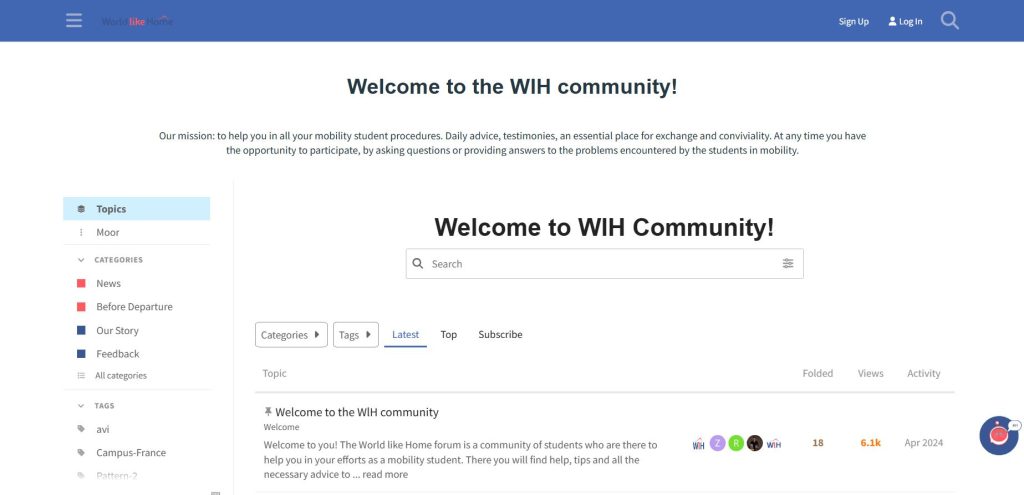
Aykan's Challenges and Solutions:
Migrating the Existing Platform to Sharetribe
The original World Like Home platform was built on a custom tech stack, and transitioning to Sharetribe presented several hurdles—ranging from data consistency issues to replicating custom features within Sharetribe’s framework. There were risks of user data loss, broken functionality, and potential downtime, all of which could negatively impact trust and user retention.
To address this, we developed a phased migration strategy that included extensive data audits, staged rollouts, and pre-deployment testing. Essential features were rebuilt on Sharetribe with precision, ensuring functionality parity with the previous system. We also implemented secure data transfer protocols to migrate user profiles, listings, and reviews while minimizing disruption to the existing user base.
E-Signature, Brevo, and Chatbot Integration
Integrating advanced third-party services like e-signature workflows, Brevo CRM (formerly Sendinblue), and an AI-powered chatbot into a Sharetribe-based system introduced complexity due to API limitations and the need for custom logic between services. These tools had to work in sync with user actions without degrading platform performance or causing redundancy.
We tackled this by carefully mapping out the entire user journey, identifying the exact trigger points for contracts, emails, and bot interactions. Our team developed custom connectors and automation workflows that allowed the system to seamlessly send e-signature requests after bookings, dispatch marketing or transactional emails from Brevo, and enable the chatbot to assist in real-time. This ensured a fully synchronized experience, enhancing support and user engagement across touchpoints.
Supporting Credit Card and Bank Transfer Payments
The financial model required us to support both credit card and bank transfer payments, especially considering international users with varying payment preferences. At the same time, we needed to ensure full compliance with financial regulations, transaction security, and fraud prevention, all within Sharetribe’s capabilities.
We selected Stripe for its flexibility and global reach, enabling support for multiple payment methods under a single integration. A category-based pricing system was developed on top of Stripe to apply varying platform fees depending on the type of service booked. To maintain financial control and ensure trust, payouts to service providers were handled manually through the Stripe dashboard, giving the admin oversight on each transaction.
Implementing a Pre-Booking System and Category-Based Pricing
Students often searched for services not yet available in the platform’s listings, making it essential to provide a fallback option that preserved the user’s intent to book. On top of that, we needed a dynamic pricing structure that could adjust based on the category of the service offered.
Our solution involved creating a dedicated UI for pre-booking, where students could enter specific needs, preferred dates, and budget, and proceed with payment in advance. The platform then took over the task of actively sourcing a matching provider, creating a concierge-like experience. Additionally, we implemented category-based pricing rules, allowing the system to automatically adjust service fees and platform commissions, ensuring both transparency and profitability.
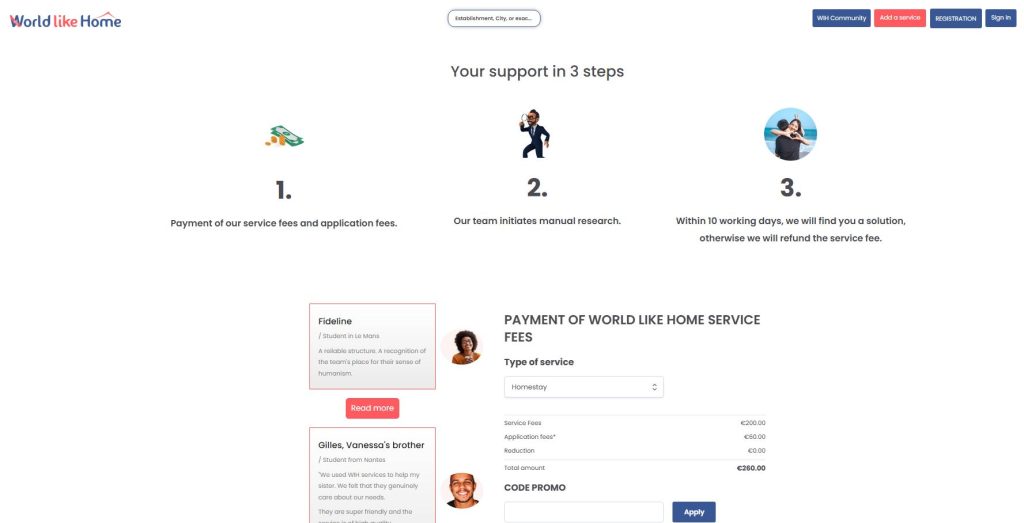
Coupon Code Implementation
Introducing promotional discounts through coupon codes posed challenges in maintaining revenue balance and avoiding misuse. The system had to handle conditions like expiration dates, usage limits, and applicable service categories, all while ensuring that platform revenue wasn’t compromised.
We addressed this by integrating a flexible and rule-based coupon system within the admin dashboard. Admins could create custom discount campaigns with predefined conditions—such as minimum order value, usage caps per user, or first-time bookings only. The coupon logic was integrated into the checkout process with real-time validation, ensuring promotions were applied fairly and did not interfere with revenue goals.
